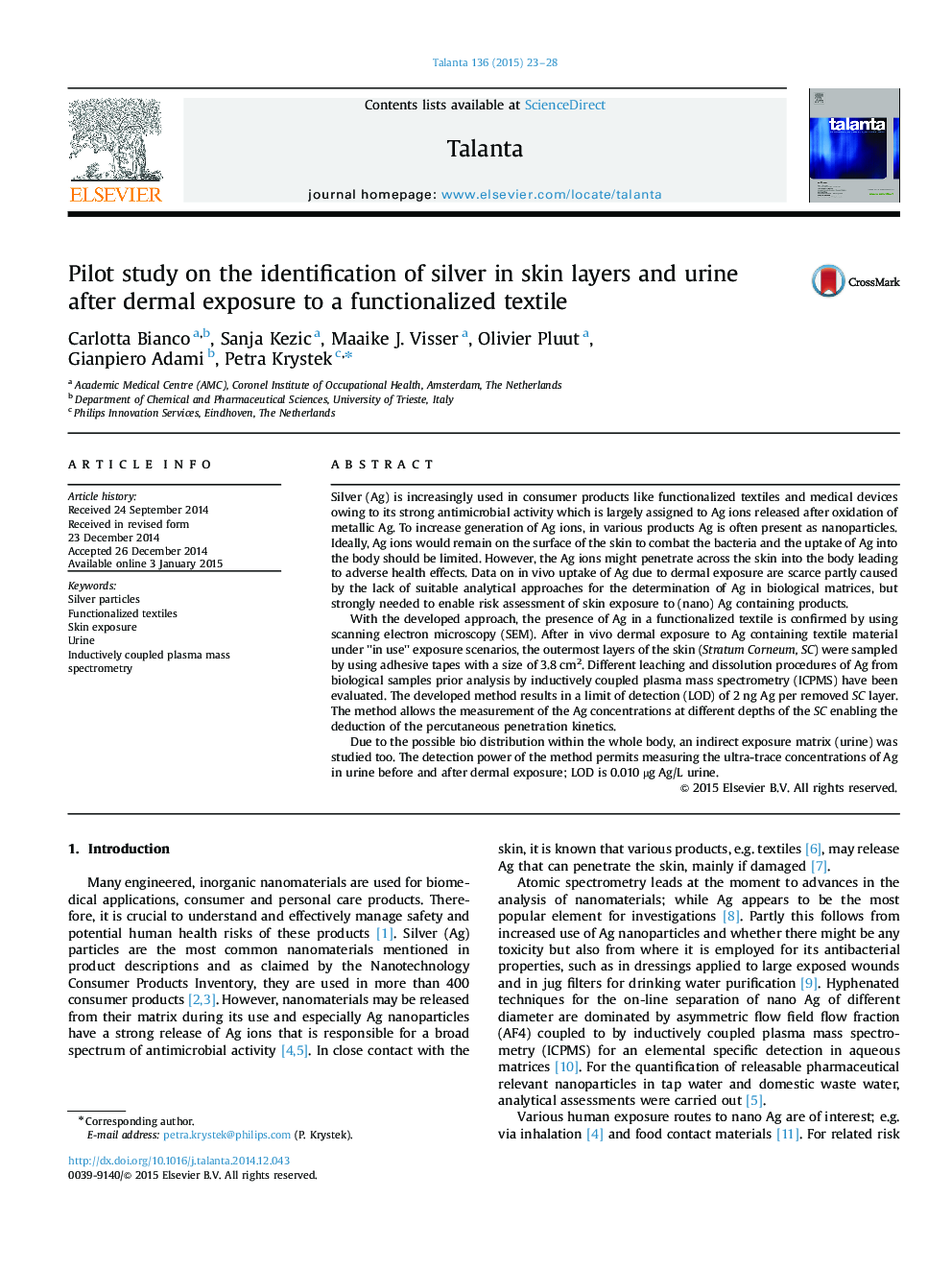| Article ID | Journal | Published Year | Pages | File Type |
|---|---|---|---|---|
| 1241920 | Talanta | 2015 | 6 Pages |
•Modern functionalized textile with silver particles.•Skin sampling and analysis after different exposure scenarios.•Study in second exposure matrix.•Inductively coupled plasma mass spectrometry.•Tool provides toxicological insights and exposed skin depth profiling.
Silver (Ag) is increasingly used in consumer products like functionalized textiles and medical devices owing to its strong antimicrobial activity which is largely assigned to Ag ions released after oxidation of metallic Ag. To increase generation of Ag ions, in various products Ag is often present as nanoparticles. Ideally, Ag ions would remain on the surface of the skin to combat the bacteria and the uptake of Ag into the body should be limited. However, the Ag ions might penetrate across the skin into the body leading to adverse health effects. Data on in vivo uptake of Ag due to dermal exposure are scarce partly caused by the lack of suitable analytical approaches for the determination of Ag in biological matrices, but strongly needed to enable risk assessment of skin exposure to (nano) Ag containing products.With the developed approach, the presence of Ag in a functionalized textile is confirmed by using scanning electron microscopy (SEM). After in vivo dermal exposure to Ag containing textile material under ׳׳in use׳׳ exposure scenarios, the outermost layers of the skin (Stratum Corneum, SC) were sampled by using adhesive tapes with a size of 3.8 cm2. Different leaching and dissolution procedures of Ag from biological samples prior analysis by inductively coupled plasma mass spectrometry (ICPMS) have been evaluated. The developed method results in a limit of detection (LOD) of 2 ng Ag per removed SC layer. The method allows the measurement of the Ag concentrations at different depths of the SC enabling the deduction of the percutaneous penetration kinetics.Due to the possible bio distribution within the whole body, an indirect exposure matrix (urine) was studied too. The detection power of the method permits measuring the ultra-trace concentrations of Ag in urine before and after dermal exposure; LOD is 0.010 µg Ag/L urine.
Graphical abstractFigure optionsDownload full-size imageDownload as PowerPoint slide
